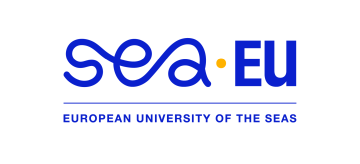ORCID ID: 0000-0002-3694-5888
Professor of Applied Mathematics. His research activity focuses mainly on Functional Analysis, mostly in the filed of series and summability in normed spaces, where our research group is a world-wide reference and internationally recognised in the Theory of Summability of Series. A second field of research focuses on the mathematical foundations from the perspective of the history of Mathematical Analysis. Another scope of work is the transference of the knowledge generated by the research to the industry and business network, where he has been appointed General Director for University of Business and Vice-rector for Transference (2011-2019).
Our research group main framework is Functional Analysis, in particular: Theory of Summability of Series: Operator Theory; Geometry of Banach Spaces; links between Operator Theory and Geometry of Banach Spaces (with remarkable advances on Supporting Vector Analysis, and its applications to Bioengineering and Physics, as well as on Banach-Stone-like representations for mappings between Lipschitz functions). This framework also involves studies on the mathematical foundations from the perspective of the history of Mathematical Analysis. Finally, another scope of work is the transference of the knowledge generated by our research to the industry and business network.
Series and summability in normed spaces
Topological modules
Composition Operators
Lipschitz Spaces
Bishop-Phelps-Bollobás Property
Measure Theory in effect algebras
History of Mathematical Analysis
Taking into consideration the research lines of our group, the members of our research group are internationally recognized experts on several techniques and methodologies, among which we highlight the following:
1) Mathematical modelling of Real-life problema derived from Biongineering, Physics and Statistics.
2) Designing of new and innovative mathematical tools, under the context of infinitesimal calculus and functional analysis, for the resolution of a wide variety of problems derived from the modeling as well as those of strictly mathematical nature.
3) Rigorous proofs, by means of formal mathematical languages, of the logical truthfulness of the new mathematical tools designed.
1. On statistical convergence and strong Cesàro convergence by moduli
León-Saavedra, F.; Listán-García, M. C.; Pérez-Fernández, F.J. y Romeo de la Rosa, M.P.
Journal of Inequalities and Applications (2019) Vol: 298 (2019). Pgs: 1-12
2. Composition operators with a minimal commutant
Lacruz, M. ; León-Saavedra, F. ; Petrovic, S. ; Rodríguez-Piazza, L.
Adv. Math. 328 (2018), 890--927
Garcia-Pacheco, F. J.; Cobos-Sanchez, C. ; Moreno-Pulido, S.; Sanchez-Alzola, A.
Commun. Nonlinear Sci. Numer. Simul. 82 (2020), 105054, 22 pp.
4. On statistical convergence and strong Cesàro convergence by moduli.
León-Saavedra, F. ; Listán-García, M. C. ; Pérez Fernández, F. J.; Romero de la Rosa, M. P.
J. Inequal. Appl. 2019, Paper No. 298, 12 pp.
5. Orlicz–Pettis Theorem through Summability Methods.
León-Saavedra, F.; Romero de la Rosa, M.P.; Sala, A.
Mathematics 2019, 7, 895.
